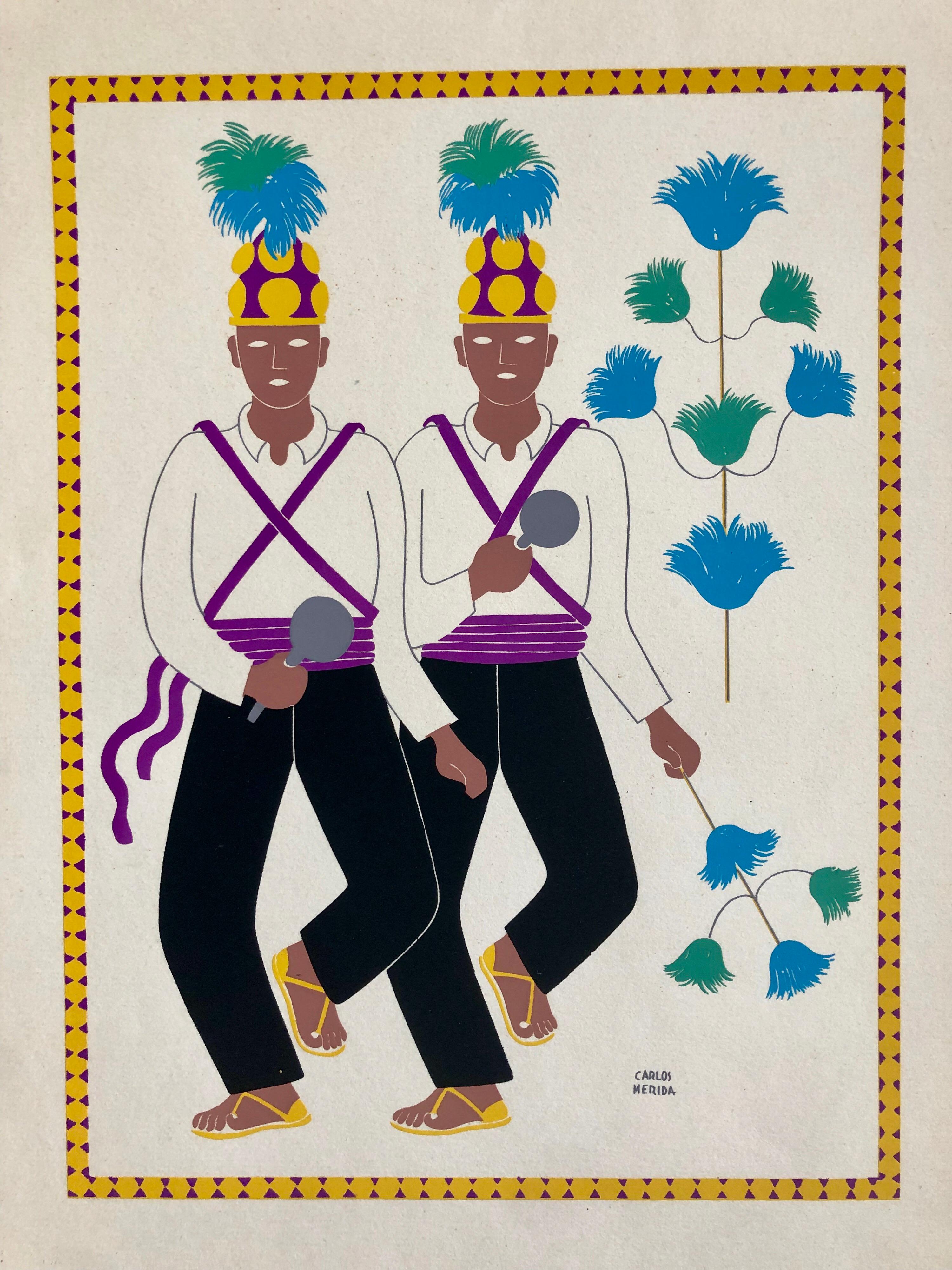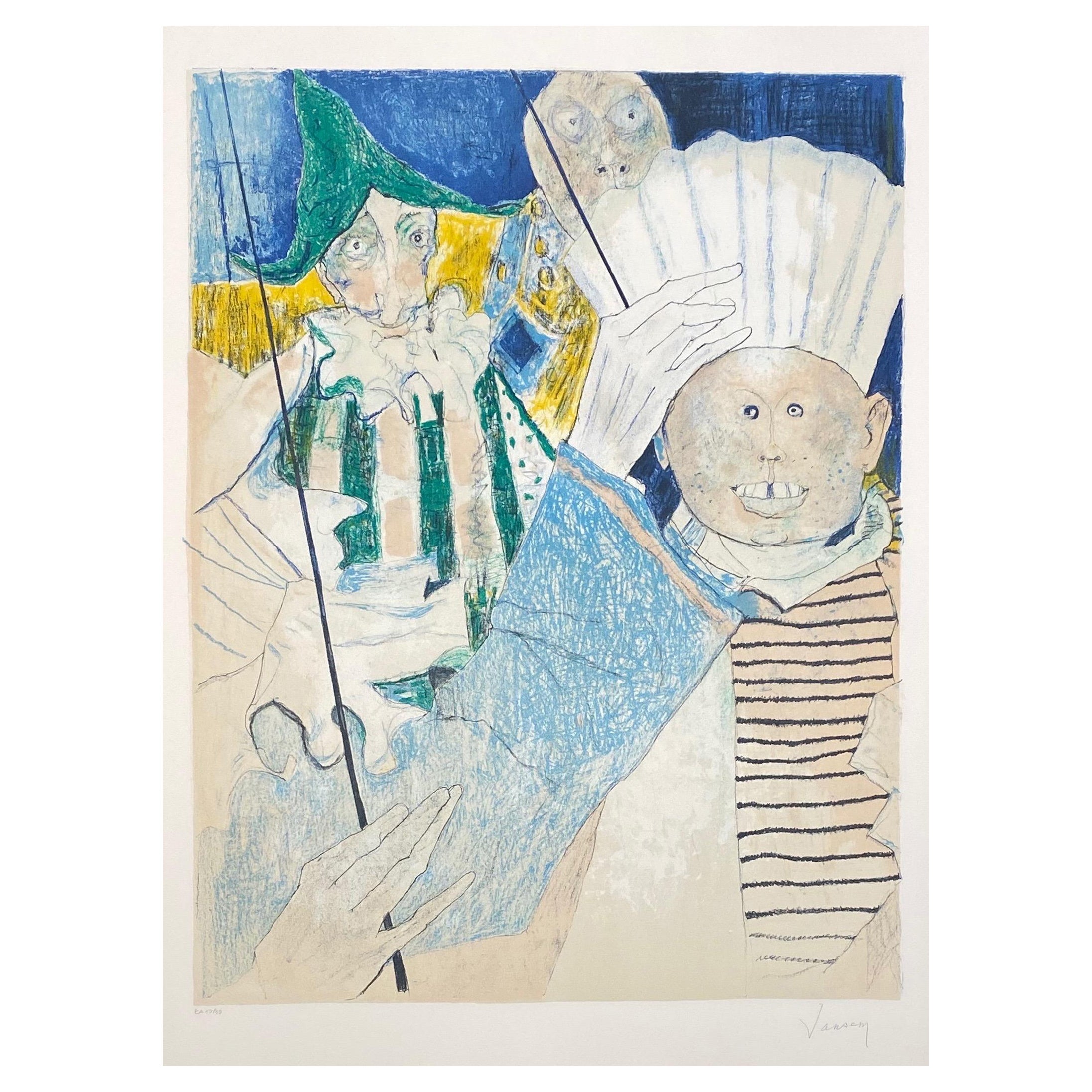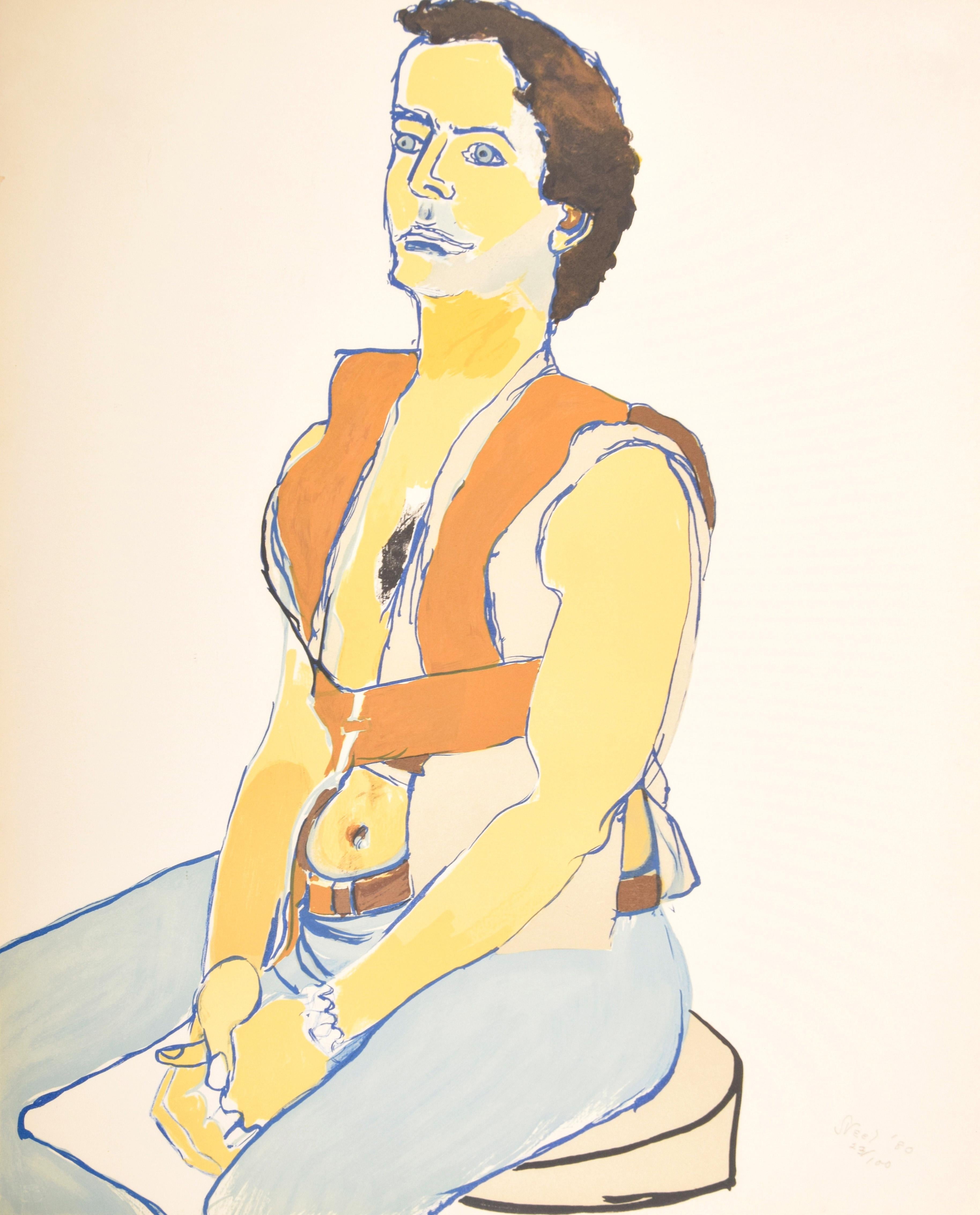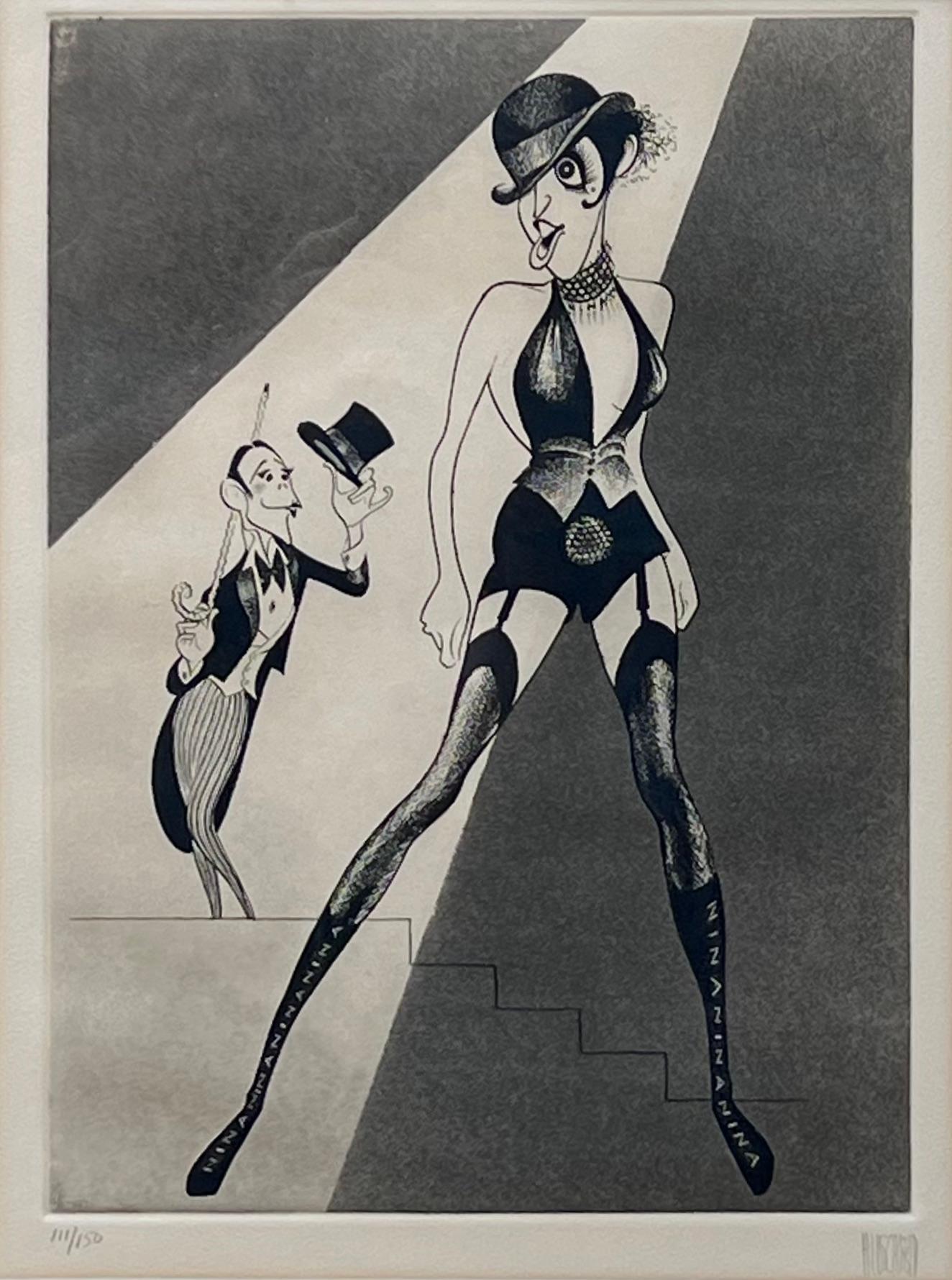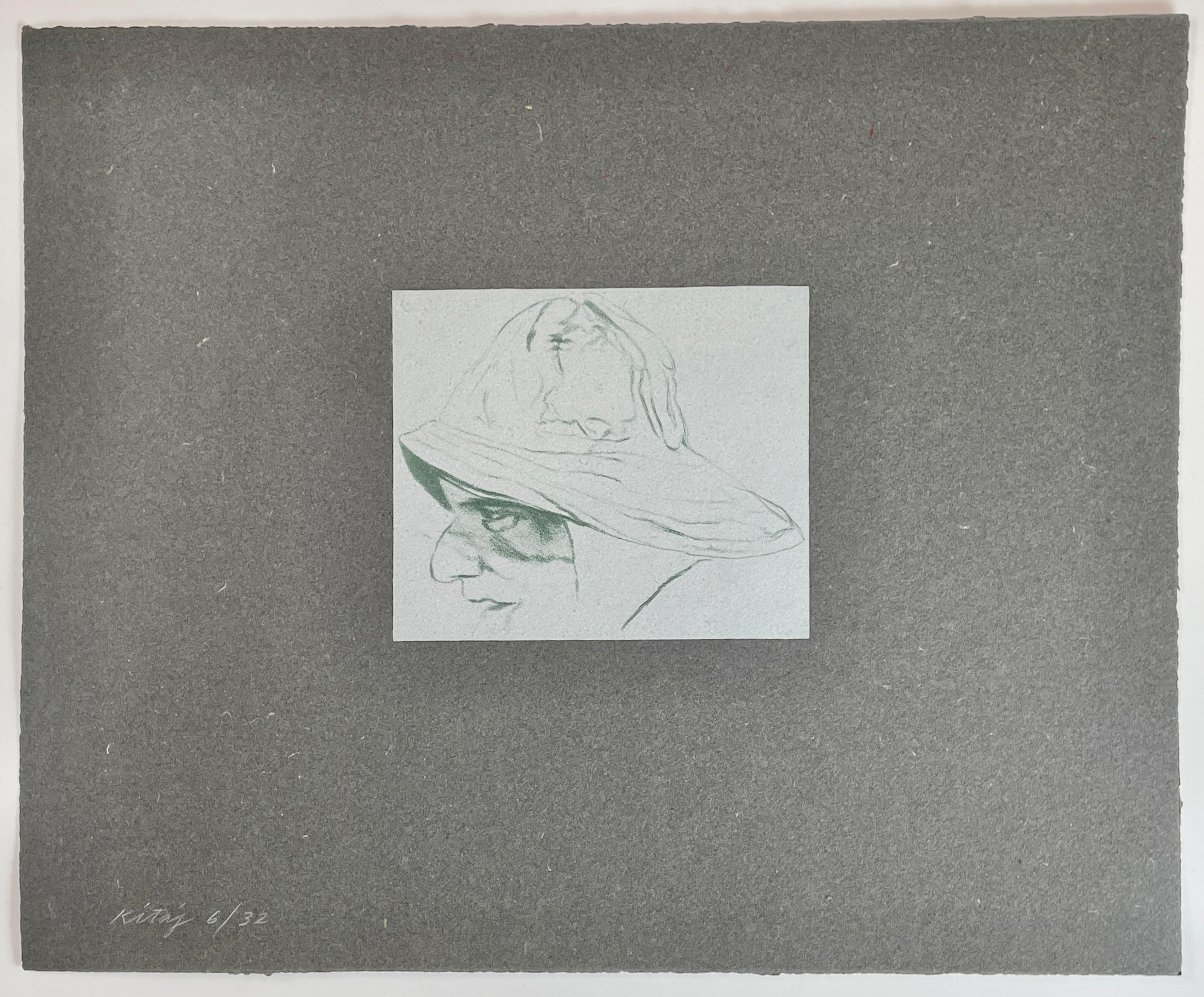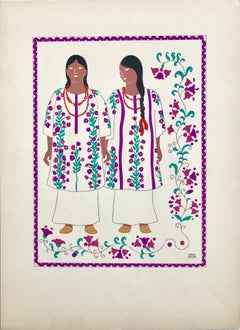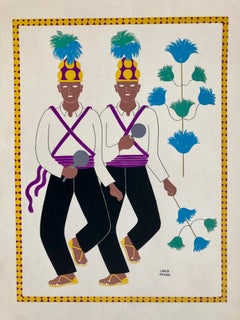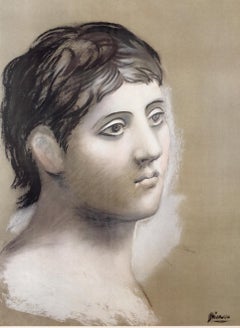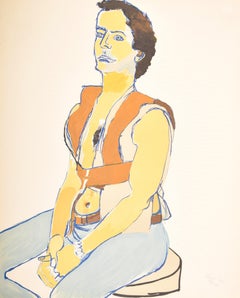
Israeli Modernist Judaica Candle Lighting Lithograph
View Similar Items
Want more images or videos?
Request additional images or videos from the seller
1 of 11
Sami BrissIsraeli Modernist Judaica Candle Lighting Lithograph
About the Item
- Creator:Sami Briss (1930, French)
- Dimensions:Height: 23.75 in (60.33 cm)Width: 18.13 in (46.06 cm)
- Medium:
- Movement & Style:
- Period:
- Condition:Very small tear on right side. Please see photos.
- Gallery Location:Surfside, FL
- Reference Number:1stDibs: LU3826657152
About the Seller
4.9
Platinum Seller
These expertly vetted sellers are 1stDibs' most experienced sellers and are rated highest by our customers.
Established in 1995
1stDibs seller since 2014
1,549 sales on 1stDibs
Typical response time: 1 hour
More From This SellerView All
- 1945 Mexican Modernist Silkscreen Serigraph Print Regional Folk Art Dress MexicoLocated in Surfside, FLThis listing is for the one Silkscreen serigraph piece listed here. Mexico City, 1945. First edition. plate signed, limited edition of 1000, these serigraph plates depict various types of traditional and folk art indigenous clothing and costume styles from around Mexico. The illustrations depict the cultures of many different states in Mexico, including Oaxaca, Chiapas, Jalisco and Veracruz. Carlos Mérida (December 2, 1891 – December 21, 1985) was a Guatemalan artist who was one of the first to fuse European modern painting to Latin American themes, especially those related to Guatemala and Mexico. He was part of the Mexican muralism movement in subject matter but less so in style, favoring a non-figurative and later geometric style rather than a figurative, narrative style. Mérida is best known for canvas and mural work, the latter including elements such as glass and ceramic mosaic on major constructions in the 1950s and 1960s. One of his major works, on the Benito Juarez housing complex, was completely destroyed with the 1985 Mexico City earthquake, but a monument to it exists at another complex in the south of the city. Carlos Mérida was born Carlos Santiago Ortega in Guatemala City to Serapio Santiago Mérida and Guadalupe Ortega Barnoya. He later changed his name what is known by as he thought it was more sonorous. His brothers and children also took the Mérida name later on. He was of mixed Spanish/Maya-Quiché heritage which he promoted during his life. As a young child, Mérida had both music and art lessons, and his first passion was music, which led to piano lessons. He studied at a trade school called the Instituto de Artes y Oficios, then the Instituto de Ciencias y Letras. Here he began to have a reputation for the avant garde. Merída’s first trip to the United States was in 1917, where he met writer Juan José Tablada. Mérida made several trips to Europe over his lifetime to both study art and work as an artist and diplomat. His early trips in the 1920s and 1930s put him in touch with both avant garde movements in Europe as well as noted Latin American artists, especially those from Mexico. His last trip was in 1950s. In 1963, he donated canvases, graphic pieces and mural sketches to the Universidad Nacional Autónoma de Mexico. Merida was one of a number of artists such as Diego Rivera and Gerardo Murillo who became committed to promoting the handcrafts and folk art of Mexico and Central America, with a particular interest in those of Guatemala, often featuring Mayan textiles or elements in their decoration in his artwork. He died in Mexico City at the age of 94 on December 21, 1985. As there was little opportunity for artists in Guatemala, in 1910, Mérida traveled to Paris with a friend named Carlos Valenti on a German cargo ship. From then until 1914, he lived and worked in Paris and traveled much of Europe. This put him in touch with European avant garde artists such as Van Dagen, Amedeo Modigliani, Pablo Picasso and Piet Mondrian as well as Latin American artists studying in Europe such as Diego Rivera, Jorge Enciso, Ángel Zárraga and Dr. Atl. He exhibited his work in venues such as the Independent Salon and the Giroux Gallery in Paris. Mérida has forty five exhibitions in the United States and eighteen in Mexico from 1928 to 1948. These included an exhibition with Rufino Tamayo at the Art Center of New York (1930), the John Becker and Valentine galleries in New York (1930), the Club de Escritores de México and the Galería Posada in Mexico City (1931), the Stendhal Gallery and the Stanley Rose...Category
1940s Folk Art Portrait Prints
MaterialsScreen
- 1945 Mexican Modernist Silkscreen Serigraph Print Regional Folk Art Dress MexicoLocated in Surfside, FLThis listing is for the one Silkscreen serigraph piece listed here. Mexico City, 1945. First edition. plate signed, limited edition of 1000, these serigraph plates depict various types of traditional and folk art indigenous clothing and costume styles from around Mexico. The illustrations depict the cultures of many different states in Mexico, including Oaxaca, Chiapas, Jalisco and Veracruz. Carlos Mérida (December 2, 1891 – December 21, 1985) was a Guatemalan artist who was one of the first to fuse European modern painting to Latin American themes, especially those related to Guatemala and Mexico. He was part of the Mexican muralism movement in subject matter but less so in style, favoring a non-figurative and later geometric style rather than a figurative, narrative style. Mérida is best known for canvas and mural work, the latter including elements such as glass and ceramic mosaic on major constructions in the 1950s and 1960s. One of his major works, on the Benito Juarez housing complex, was completely destroyed with the 1985 Mexico City earthquake, but a monument to it exists at another complex in the south of the city. Carlos Mérida was born Carlos Santiago Ortega in Guatemala City to Serapio Santiago Mérida and Guadalupe Ortega Barnoya. He later changed his name what is known by as he thought it was more sonorous. His brothers and children also took the Mérida name later on. He was of mixed Spanish/Maya-Quiché heritage which he promoted during his life. As a young child, Mérida had both music and art lessons, and his first passion was music, which led to piano lessons. He studied at a trade school called the Instituto de Artes y Oficios, then the Instituto de Ciencias y Letras. Here he began to have a reputation for the avant garde. Merída’s first trip to the United States was in 1917, where he met writer Juan José Tablada. Mérida made several trips to Europe over his lifetime to both study art and work as an artist and diplomat. His early trips in the 1920s and 1930s put him in touch with both avant garde movements in Europe as well as noted Latin American artists, especially those from Mexico. His last trip was in 1950s. In 1963, he donated canvases, graphic pieces and mural sketches to the Universidad Nacional Autónoma de Mexico. Merida was one of a number of artists such as Diego Rivera and Gerardo Murillo who became committed to promoting the handcrafts and folk art of Mexico and Central America, with a particular interest in those of Guatemala, often featuring Mayan textiles or elements in their decoration in his artwork. He died in Mexico City at the age of 94 on December 21, 1985. As there was little opportunity for artists in Guatemala, in 1910, Mérida traveled to Paris with a friend named Carlos Valenti on a German cargo ship. From then until 1914, he lived and worked in Paris and traveled much of Europe. This put him in touch with European avant garde artists such as Van Dagen, Amedeo Modigliani, Pablo Picasso and Piet Mondrian as well as Latin American artists studying in Europe such as Diego Rivera, Jorge Enciso, Ángel Zárraga and Dr. Atl. He exhibited his work in venues such as the Independent Salon and the Giroux Gallery in Paris. Mérida has forty five exhibitions in the United States and eighteen in Mexico from 1928 to 1948. These included an exhibition with Rufino Tamayo at the Art Center of New York (1930), the John Becker and Valentine galleries in New York (1930), the Club de Escritores de México and the Galería Posada in Mexico City (1931), the Stendhal Gallery and the Stanley Rose...Category
1940s Folk Art Figurative Prints
MaterialsScreen
- 1945 Mexican Modernist Silkscreen Serigraph Print Regional Folk Art Dress MexicoLocated in Surfside, FLThis listing is for the one Silkscreen serigraph piece listed here. Mexico City, 1945. First edition. plate signed, limited edition of 1000, these serigraph plates depict various types of traditional and folk art indigenous clothing and costume styles from around Mexico. The illustrations depict the cultures of many different states in Mexico, including Oaxaca, Chiapas, Jalisco and Veracruz. Carlos Mérida (December 2, 1891 – December 21, 1985) was a Guatemalan artist who was one of the first to fuse European modern painting to Latin American themes, especially those related to Guatemala and Mexico. He was part of the Mexican muralism movement in subject matter but less so in style, favoring a non-figurative and later geometric style rather than a figurative, narrative style. Mérida is best known for canvas and mural work, the latter including elements such as glass and ceramic mosaic on major constructions in the 1950s and 1960s. One of his major works, on the Benito Juarez housing complex, was completely destroyed with the 1985 Mexico City earthquake, but a monument to it exists at another complex in the south of the city. Carlos Mérida was born Carlos Santiago Ortega in Guatemala City to Serapio Santiago Mérida and Guadalupe Ortega Barnoya. He later changed his name what is known by as he thought it was more sonorous. His brothers and children also took the Mérida name later on. He was of mixed Spanish/Maya-Quiché heritage which he promoted during his life. As a young child, Mérida had both music and art lessons, and his first passion was music, which led to piano lessons. He studied at a trade school called the Instituto de Artes y Oficios, then the Instituto de Ciencias y Letras. Here he began to have a reputation for the avant garde. Merída’s first trip to the United States was in 1917, where he met writer Juan José Tablada. Mérida made several trips to Europe over his lifetime to both study art and work as an artist and diplomat. His early trips in the 1920s and 1930s put him in touch with both avant garde movements in Europe as well as noted Latin American artists, especially those from Mexico. His last trip was in 1950s. In 1963, he donated canvases, graphic pieces and mural sketches to the Universidad Nacional Autónoma de Mexico. Merida was one of a number of artists such as Diego Rivera and Gerardo Murillo who became committed to promoting the handcrafts and folk art of Mexico and Central America, with a particular interest in those of Guatemala, often featuring Mayan textiles or elements in their decoration in his artwork. He died in Mexico City at the age of 94 on December 21, 1985. As there was little opportunity for artists in Guatemala, in 1910, Mérida traveled to Paris with a friend named Carlos Valenti on a German cargo ship. From then until 1914, he lived and worked in Paris and traveled much of Europe. This put him in touch with European avant garde artists such as Van Dagen, Amedeo Modigliani, Pablo Picasso and Piet Mondrian as well as Latin American artists studying in Europe such as Diego Rivera, Jorge Enciso, Ángel Zárraga and Dr. Atl. He exhibited his work in venues such as the Independent Salon and the Giroux Gallery in Paris. Mérida has forty five exhibitions in the United States and eighteen in Mexico from 1928 to 1948. These included an exhibition with Rufino Tamayo at the Art Center of New York (1930), the John Becker and Valentine galleries in New York (1930), the Club de Escritores de México and the Galería Posada in Mexico City (1931), the Stendhal Gallery and the Stanley Rose...Category
1940s Folk Art Figurative Prints
MaterialsScreen
- French Armenian Jean Jansem Lithograph Mod Woman in Orange Hand Signed ModernistBy Jean JansemLocated in Surfside, FLHand signed in pencil and numbered from the limited original edition. Jean Jansem (Hovhannes Semerdjian) 1920-2013 Bursa, Ottoman Turkish Empire Hovhannes "Jean" Semerdjian (Armenian: Հովհաննես "Ժանսեմ" Միրիջանի Սեմերջյան, 9 March 1920 – 27 August 2013), also known as Jean Jansem, was a French-Armenian painter. Jansem's artworks are internationally known, and are part of museum collections throughout France, Japan and the United States. A Foreign member of the National Academy of Sciences of Armenia (2002). He was awarded by the Ordre des Arts et des Lettres in 1953 and by the Knight of the French Legion of Honour in 2003. The President of Armenia awarded Jansem a Medal of Honor for his “reinforcement of Armenian-French cultural ties.” Hovhannes Semerdjian was born in 1920 in Bursa, then in the Ottoman Empire. In 1922, his family fled to Greece. He spent his childhood in Thessaloniki. They arrived to Issy-les-Moulineaux suburb of Paris, France in 1931 when he was 11 and that is when he begin to paint. The first professional schools for Jansem became the academies of Montparnasse (1934–1936). He studied in the Ecole des Arts Decoratifs. His teachers were Maurice Brianchon, Raymond Legueult and Roland Oudot. Jansem also studied at the Sabatie studio for a year. Early paintings by Jansem were mainly on national issues. Known for his washy representational paintings of figure, landscape, marine and genre scenes of European subjects: fishermen and children of Greece, bullfighting in Spain, Italian landscapes and markets, scenes of Venice and French France village marketplaces and landscapes, nude women, still lifes, and figures, Jansem painted with a variety of media that included gouache, watercolor, ink, and oil painting in a stylized and textural aesthetic. had individual exhibitions in Paris, New York, Chicago, London, Tokyo, Rome, Brussels, Lausanne, Beirut etc. His work was shown by the prominent Wally Findlay Galleries in New York, Paris, Palm Beach and Beverly Hills (they show many important artists including Gaston Sebire, Henri Maik, Gen Paul, Jean Pierre Cassigneul, Jean Dufy, Gustavo Novoa, Nicola Simbari, Dietz Edzard, Suzanne Eisendieck, Constantin Kluge, Louis Valtat, Michael Vollbracht...Category
1960s Modern Figurative Prints
MaterialsLithograph
- Lithograph Israeli Modernist Judaica, Kibbutz Boy, Bezalel ArtistBy Moshe GatLocated in Surfside, FLA signed and numbered lithograph print. Moshe Gat was born in Haifa in 1935. in 1952 he began his studies at the Bezalel School, in Jerusalem. In 1955 he returned to Haifa, where h...Category
Mid-20th Century Expressionist Figurative Prints
MaterialsLithograph
- Jewish Shtetl Hasidic Wedding Dance Judaica Lithograph Yiddish Social RealismBy William GropperLocated in Surfside, FLHand signed in pencil and numbered with Roman numerals 8/24. A very small edition. Old Lower East Side of New York or East European Shtetl. Jewish Shtetl Hasidic Klezmer Musicians. ...Category
Mid-20th Century Modern Figurative Prints
MaterialsLithograph
You May Also Like
- Tête de Jeune HommeBy (after) Pablo PicassoLocated in Knowle Lane, CranleighOffset Lithograph, Limited Edition from an edition of 175. Signed in pencil, lower right and framed in a handmade gold leaf frame. Based on an original Pastel drawn in Fontainebleau, during the summer of 1921. This neoclassical head...Category
1920s Post-War Portrait Prints
MaterialsLithograph
Sold$12,129 - Les Acadiens, 1993, original lithograph by Jean Jansem, handsigned and numberedBy Jean JansemLocated in Carouge GE, GEJean Jansem (1920-2013) Les acadiens, 1993 Lithographie sur papier Arches, justifiée E/A 16/30 Signée en bas à droite 65,5 x 50 cm / 76 x 56 cm Bibliographie: CR Jansem, 2000, n°9...Category
Late 20th Century Expressionist Figurative Prints
MaterialsLithograph
$659 Sale Price25% OffFree Shipping - Alice Neel MAN IN HARNESS Lithograph, Signed EditionBy Alice NeelLocated in Lake Worth Beach, FLAdditional Information: Provenance: Private Collection, Palm Beach, Florida Marking(s); notes: signed; ed. 23/100; 1980 Country of origin; materials: USA; lithograph Dimensions: 3...Category
Mid-20th Century Contemporary Portrait Prints
MaterialsLithograph
- Vintage Chinese Lithograph Print, c. 1920sLocated in Chicago, ILThis advertising poster from the 1930s melds the meticulous detail of traditional Chinese painting with the craft of color lithography. These advertisements, influenced by the Art De...Category
1920s Art Deco Figurative Prints
MaterialsLithograph, Paper
- Faces, Black and White - Figurative PortraitLocated in Austin, TXThis black and white original lithograph by Mexican artist Juan Carlos Breceda depicts a checkerboard of abstracted woman's face from a variety of ...Category
20th Century Figurative Prints
MaterialsArchival Paper, Lithograph
- Barbra Stresiand "Belle of 14th Street" 1973 CBS TV Special 20th Century LithoBy Albert Al HirschfeldLocated in New York, NYBarbra Stresiand "Belle of 14th Street" 1973 CBS TV Special 20th Century Litho Signed and numbered 10/150 in pencil, lower margin. Etching, 13.5” x 9.75”. Framed 21.25” x 17.25”. Pulled in 1975. Belle of 14th Street After two successful television shows on CBS, Barbra's manager, Marty Erlichman told the press, “We don't intend to go to the well once too often. The next special will have other performers. However, Barbra will never become just another hostess for just another musical variety show. Whatever we decide to do in the future shows, she will dominate in a unique fashion.” Barbra’s third television special for CBS and her sponsor, Monsanto, was titled The Belle of 14th Street . In February 1966, shortly after finishing up Color Me Barbra , Streisand and husband Elliott Gould took a second honeymoon in Paris. The trip was financed by her television corporate sponsor, Chemstrand. Barbra told the press, “I’m here to purchase the wardrobe for my next TV special. Cost is no object because my sponsor is picking up the tab.” At that point the theme of her third TV show would be fashion, and Paris offered many couture choices. Barbra was seen at a Dior fashion show wearing not the designer’s clothes, but a jaguar suit and hat she had designed herself. In all, it is said Barbra chose nine Dior outfits at a cost of $150,000. However, Barbra Streisand's third television special for CBS was postponed. In March 1966, Barbra flew to London to appear at the Prince of Wales Theatre in Funny Girl . Shortly after beginning her run in London, Barbra announced her pregnancy. Not only did that cause her concert tour to be abbreviated, but Barbra’s television special was postponed as well. Barbra told the BBC in July 1966: “I also can’t do my third television show, which I was supposed to do here [London].” Returning to the States, Barbra performed four concert dates, and then retired to enjoy the rest of her pregnancy and give birth to her son, Jason, in December 1966. CBS and Chemstrand wanted a new special by the end of 1967, therefore production on the show picked up momentum in March 1967. (Barbra was due in Hollywood in May to begin shooting the Funny Girl film.) The format and theme of the television show had changed, too. Instead of centering on fashion, Barbra’s next special would be situated in a 1900’s Vaudeville theater. “We were all determined that the show not be just a variety format,” director Joe Layton said. “We wanted something different. So we hit upon the idea of restaging a vaudeville performance. All the acts, songs, skits and specialties had to be derivative of the period between 1895-1912.” Barbra’s creative collaborators did meticulous research on Vaudeville — “We even called George Burns in Hollywood and Jack Pearl,” said Barbra’s manager, Marty Erlichman. Entitled The Belle of 14th Street , the new special would allow Barbra to play several different characters but not have to shoulder the burden of carrying another one-woman show—this time Streisand would be accompanied by guest stars: Broadway actor Jason Robards; Vaudeville veteran John Bubbles; and Lee Allen...Category
1970s Performance Figurative Prints
MaterialsLithograph
Recently Viewed
View AllMore Ways To Browse
Modernist Wood Bird
Vintage Fish Fabric
Wood Judaica
Georges Braque Two Birds
K Robert Oil Painting
Folk Art Judaica
Tapisserie Vintage
Kingdom Of Jerusalem
Romanian Judaica
Swedish Wood Bird
St Gill
Vintage Den Haag
Den Los Angeles
Vintage Tabard
Judaica Candle
Russian Icon Religious Painting
Romanian Folk Art Paintings
Andre Kohn


